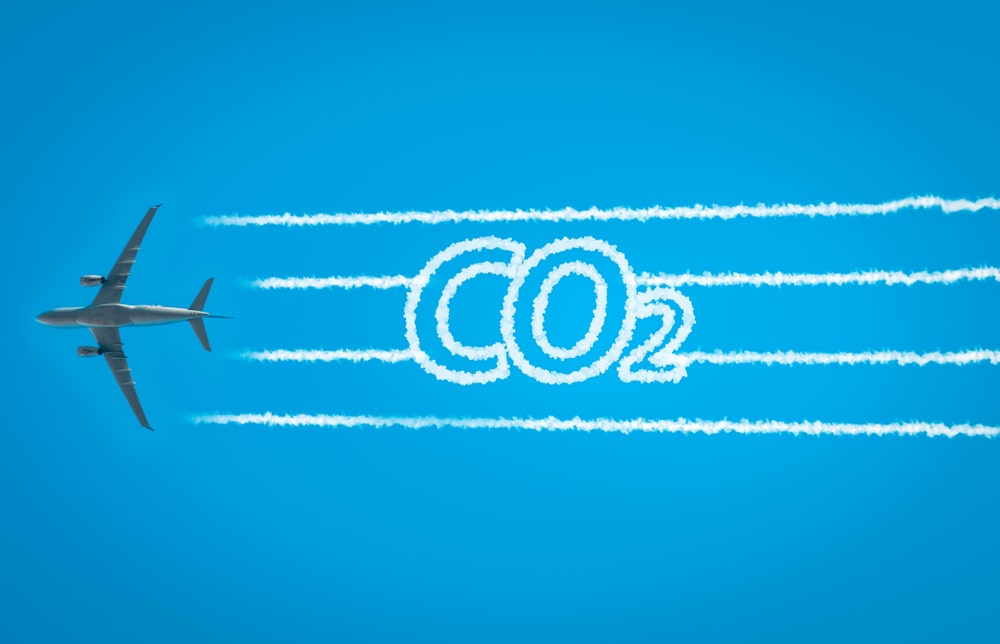
With the 2024 UN Climate Change Conference, known as COP29, having taken place in Baku, Azerbaijan, where the world’s nations met to discuss and debate how to bring global emissions down, climate change was once again in the headline news.
Many industries and governments have committed themselves to becoming carbon neutral within the next few decades, with the UK Government committing to be carbon neutral by 2030.
The aviation industry has committed itself to being carbon neutral by 2050 and believes it can achieve this through a combination of sustainable fuels, electric aircraft, and carbon removal technologies.
Yet, Aviation, in particular flying, has been viewed by many, as a leading emitter of carbon emissions, and this is true.
Flying is one of the most carbon-intensive activities, but only contributes 2.5% of the world’s carbon emissions, according to various studies.
There are some reasons behind this, with the most notable being that not everyone actually flies.
One study by the International Council on Clean Transportation (ICCT), estimated that only 3% of the global population regularly flies.
Another study found that if everyone in the world were to take one long-haul flight per year, aircraft emissions would far exceed the entire CO2 emissions of the United States.
A return flight from London to San Francisco emits around 5.5 tons of CO2 equivalent per person, more than twice the emissions produced by a family car in a year, and around half the average carbon footprint of someone living in Britain, according to the BBC.
It is not just long-haul flights that have contributed to higher emissions. A single passenger travelling on a British domestic flight can generate equivalent to 254g of CO2 for every kilometer they travel according to a 2020 study by the then Department of Business, Energy and Industrial Strategy.
Passenger and freight demand has continued to skyrocket, as more individuals have more income and air travel has become relatively cheaper than in previous decades before. Between 1990 and 2019, passenger and freight demand quadrupled.
In 2019, passengers travelled 8 trillion kilometers, around about the same as a light year according to an article from Our World in Data. (8 trillion kilometers is equivalent to 0.85 light years).
Planes became more energy-efficient in this period, the article states, with travelling one-passenger kilometer in 1990 using 2.9 megajoules (MJ), which by 2019, had fallen to 1.3 MJ. Yet, the carbon-intensity of fuel, or the amount of CO2 emitted per unit has not changed, as aircraft still use standard jet fuel as the 1990.
Consequently, as the article argues, if industry is more efficient and demand soars, then unfortunately, emissions will rise, despite any gains made in efficiency. The statistics bear this out, with global aviation’s emissions rising from 0.5 billion tons in 1990 to 1 billion tons in 2019.
Newer studies have argued that aviation has a larger overall contribution to climate change, when one moves away from just measuring the amount of CO2 emitted.
In 2013, the Intergovernmental Panel on Climate Change (IPCC), a body of the UN, designed to advance the scientific knowledge about climate change caused by human activities, introduced a new measure to do just this. It is known as ‘effective radiative forcing’ or ERF.
ERF is the increase or decrease in the balance between energy coming from the sun and energy emitted from the Earth since pre-industrial times.
Using this new metric, global air travel and transportation is responsible for 3.5% of all the drivers of global climate change according to a study by Atmospheric Environment.
The study examined aviation’s contribution to climate change, including emissions of CO2, nitrogen oxide and the effect of contrail and contrail cirrus. These are the short-lived clouds that are created in jet engine exhaust fumes as the aircraft cruises at altitude. These clouds reflect sunlight during the day and trap the heat trying to escape at night.
It found that that two-thirds of the impact of aviation on climate change can be pinpointed to contrails, nitrogen oxide, water vapor, sulphate aerosol, soot and other aerosols.
The remainder can be linked to cumulative heat-trapping effects of long-lived CO2 emissions, which between 1940 and 2018, stood at 32.6 billion tons, equivalent to the global CO2 emissions for 2010, according to Atmospheric Environment.
Clearly, aviation is a significant driver to climate change, but this is only going to get worse in the short to medium term, as other industries such as electricity, road, and even steel and carbon all decarbonise.
Furthermore, this “stickiness” coupled with growing demand, as more incomes rise around the world, means that the industry faces a difficult challenge in trying to achieve its goal for carbon neutrality by 2050.

Related Articles
Aviation
Aviation
Aviation